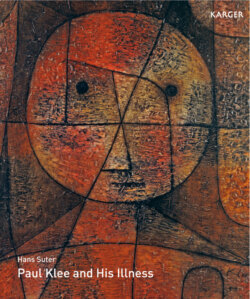Читать книгу Paul Klee and His Illness - H. Suter - Страница 6
На сайте Литреса книга снята с продажи.
ОглавлениеFig. 1. Symbiosis, 1934, 131
For my wife Marlis Suter-Trächsel and our daughters Maja Wassmer-Suter and Christa Zaugg-Suter
In loving memory of our son and brother Gerhard Suter (1963-1986)
And for my teacher and friend Professor Dr. med. Alfred Krebs
Preface
Fig. 2. Aljoscha Klee
As the grandson of Paul Klee, faced with writing a preface to such a meticulously researched and written book and commenting on the tragedy contained in its pages, I find myself delving into a story that is really only relevant to me from a historical perspective. Sadly, I never had the chance to know my grandfather personally, but I have been able to draw on a whole latticework of personal memories. These memories are not directly linked to Paul Klee’s illness, but they are a product of my parents’ recollections and reflections on what they experienced. They were forced to stand by helplessly, watching and sharing in the artist’s inevitable decline towards death. As a child growing up, I was not really able to fully understand my parents’ stories and conversations about ‘Buzzi’. But I gained a realization of the mystery of death and the artist’s awareness of his own mortality, and this made an impression on me and preoccupied me during my formative years. For example, I was impressed by his determination to continue to achieve as much as his remaining time on earth would allow. Paul Klee still had so much more to say, and he knew it.
His later work, which was not only influenced by his illness, but which was done in defiance of that illness, is surely one of the most brilliant demonstrations of how suffering and sadness can be overcome through art and imagery, and in which, despite everything, irony can still shine through. I welcome this book as an important and sensitive contribution towards the appreciation of Klee’s later work.
Aljoscha Klee
